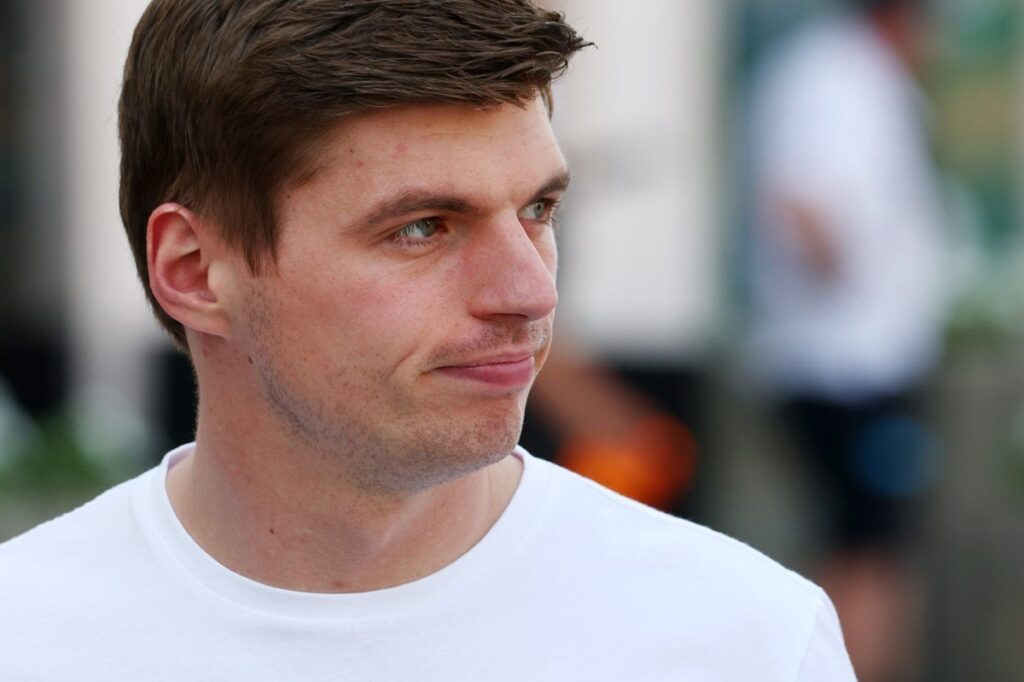Although Max Verstappen chalked up a decisive victory over the McLarens at last week’s Japanese Grand Prix, he believes the higher-degradation properties of the Bahrain circuit will ensure Red Bull is in for a much tougher weekend.
It has been well documented that McLaren’s MCL39 has an advantage over its rivals regarding tyre degradation over a race stint, with the first clues of the team’s prowess on a longer stint emerging in the pre-season test at Bahrain; estimates put its per-lap advantage over the rest of the field at around 0.4s on average over a stint.
Due to low levels of degradation at Suzuka, Red Bull’s disadvantage to McLaren was significantly mitigated. The resurfaced track cut the tyre wear significantly, with tyres largely only limited by thermal degradation at the rear – which did not end up making much of an impact.
But Bahrain has a very different surface, given that it remains unchanged since the circuit was opened for use in 2004. High roughness and warm temperatures, even at night, means that the drivers will have to work very hard to maintain tyre life over a stint. This won’t be particularly easy to achieve, even with the hardest trio of Pirelli compounds – the C1-3 constructions.
Verstappen expects a “severe” deficit to McLaren, and reckoned that he was even conferred a small tyre preservation deficit versus the Woking squad at Suzuka on the opening stint, but it was difficult to notice given Lando Norris could not pass.
“It will be more severe. The first stint in Australia we got destroyed also with the overheating, and the same in China,” Verstappen said.
Lando Norris, McLaren, Oscar Piastri, McLaren, Max Verstappen, Red Bull Racing
Photo by: Clive Mason/Getty Images
“I would say to a certain extent also in Suzuka, but you can’t pass because Lando was closing up to me in the end of that first stint again. I was just driving to my own pace, but I think because the track temp dropped quite a bit, on the day that helped a bit.
“Here, it’s going to be hot. We drive in the night, so it’ll cool down a little bit, but it’s still hot – with aggressive tarmac.
“On paper from what we’ve seen so far this season, that’s not ideal for us compared to McLaren. But it’s up to us of course to try and find those improvements in the car or tyre behaviour and go from there.”
Last season’s grand prix in Bahrain was a two-stopper for most – although a handful of drivers cast out of the reckoning attempted to salvage something from their races with three stops. Pirelli’s revised C2 and C3 compounds are also marginally softer compared to last season’s constructions.
The tyre company estimates in its pre-round preview that, even with softer constructions, the C2 could prove to be a much stronger race tyre and potentially offer some teams a way into a one-stop strategy.
But this would depend largely on thermal degradation of the tyre; managing blistering through the stints will be a key mechanic over the course of a grand prix. Furthermore, track conditions over the Bahrain Grand Prix will be hotter compared to testing.
It’s very plausible that, if left unchecked, the stint delta between teams could escalate as a result depending on progress between the February prelude and today. To keep that in check, tyre pressures have also been raised by 0.5psi versus the pre-season test to mitigate the effect of increased wear throughout the race.
In this article
Jake Boxall-Legge
Formula 1
Max Verstappen
Red Bull Racing
McLaren
Be the first to know and subscribe for real-time news email updates on these topics
Subscribe to news alerts
Read the full article here

